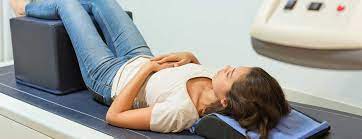Bone Densitometry (DEXA)
Jump
to Tests
Bone Densitometry (DEXA) is the gold standard for measuring bone mass and detecting osteoporosis. The test measures calcium and other types of mineral levels in your bones.
In India, 1 in 6 women over 50 are at risk of breaking their femur (hip), while 1 in 4 suffers from severe fractures in one or more bones. Bone mineral loss is much more common in people with osteoporosis and are more prone to fractures. If osteoporosis could be identified and treated, many fractures could be prevented among adults.
What are the risk factors of Osteoporosis?
- Family history of osteoporosis.
- Early menopause is either natural or surgical.
- Lack of periods in young women.
- Low dietary intake of calcium.
- Heavy smoking.
- High-caffeine intake.
- Hyperthyroidism or hyperparathyroidism.
- Overdose of anti-seizure medicine.
- Cushing's syndrome.
- Kidney failure colitis.
- Stomach or intestinal surgery.
What happens during Bone Densitometry?
Bone density testing can be done in various ways. One of the accurate ways is to use a dual-energy X-ray absorptiometry (DEXA) scan. DEXA uses low-dose X-rays, is painless, and takes about 10 minutes. DEXA can determine bone mineral density for any bone but is most commonly used for the hip and lumbar (lower) spine.
The scan can be used to perform vertebral fracture assessment. It is used to uncover bone problems, like in people with unexplained back pain or who have experienced a loss in height of more than an inch in a year.
Any risks associated with the procedure?
Bone mineral density uses a slight amount of radiation. The risk is very low compared with the advantage of detecting osteoporosis before a fracture occurs.
Instructions:
- No major preparations are required, stay hydrated and wear comfortable clothes.
- If you are or could be pregnant, tell your doctor before the test.




